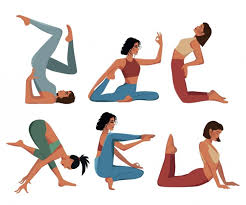
There are many ways to manage arthritis pain. However, no single treatment is guaranteed to produce complete and consistent pain relief, and doctors say many patients have unrealistic expectations about how much improvement medicine can provide. The goal, they say, isn’t necessarily to eliminate all pain, but to learn to manage it so it isn’t the focus of your life.
Many nondrug options are available to help you achieve that goal, either alone or in combination with medical therapies. It starts with being good to your body.
Eat well. It’s hard to overestimate the benefits of a healthy, anti-inflammatory eating plan. Hundreds of studies have shown that a mostly plant-based diet can significantly cut inflammation and pain. One 2021 meta-analysis of seven randomized controlled trials looked at several anti-inflammatory eating patterns, including Mediterranean, vegan, vegetarian and keto diets. All led to a profound reduction in pain. Not every trial has shown such positive results for every plant-based diet, but most have proven effective for chronic pain.
Stay active. Regular exercise is just as important as diet. It strengthens muscles that support the joints, improves flexibility, balance and mood, and can relieve pain significantly. Try to get at least 150 to 300 minutes of moderate-intensity aerobic exercise every week. Federal and organizational guidelines also recommend two weekly strength-training sessions. To start, try a brisk 30-minute walk on at least five days along with two days of weight lifting or resistance training. If you’re new to exercise, ask your doctor for a referral to a physical therapist who can show you how to get the most from your workout.
Take an (active) break. Balance activity with active recovery. This allows your body time to repair muscles after exercise. Active recovery doesn’t mean doing nothing; it means doing less intense exercise, like walking or biking, after higher intensity workouts.
Work on posture. Years of compensating for a sore hip or knee can cause pain in other parts of your body. Slouching at a computer can lead to back pain, and staring at screens can pull neck muscles out of alignment. If you have new pain or old pain gets worse, a physical therapist can help you learn how to stand, sit and move to prevent future problems.
Try Heat and Cold. Heat increases blood flow to painful joints, relaxes tight muscles and helps eliminate waste products. Cold decreases blood flow to reduce swelling, slows the transmission of pain signals through nerves and inhibits inflammatory chemicals. Cold therapy is best for pain and swelling after exercise, during a flare or in the first 48 to 72 hours after an injury. Later, try alternating hot and cold packs or warm and cold soaks (switching back and forth after about 10 minutes). For an even bigger chill: Freeze half a paper cup of water, then rub the ice on sore spots for about 10 minutes. Be sure to protect your skin with a thin cloth or paper towel.
An oldie but goodie for heat therapy, warm paraffin wax can take the edge off pain in your hands or feet. Leave the wax on while it hardens, then peel it off. Bonus: Paraffin wax is an occlusive moisturizer that can plump and soften skin.
Proven Complementary Therapies
Acupuncture. Since becoming popular in the West decades ago, acupuncture has been closely and often skeptically scrutinized. The vast majority of research – and there is plenty – has found that acupuncture has the ability to help a range of conditions, especially chronic pain. Still, skeptics remain, and some findings have been mixed. For example, a 2020 analysis of both randomized controlled trials and review articles found that acupuncture was effective for knee osteoarthritis, back pain and fibromyalgia, but not hip osteoarthritis or rheumatoid arthritis. Another analysis of 32 randomized controlled trials found that fire acupuncture, which uses heated needles, worked better for pain than traditional acupuncture. Other studies suggest traditional acupuncture is equally effective for all types of pain. These varying results may be due to the quality and length of studies, not to a problem with acupuncture itself.
Massage. Various forms of bodywork can provide temporary pain relief. Try full-body Swedish massage for stress relief and relaxation, deep-tissue massage, which releases knots in deeper tissue on deeper muscle tissue to release knots, or myofascial release, which uses long, stretching strokes to relieve tension around connective tissue.
Psychotherapy. Certain counseling techniques may help ease anxiety, reduce emotional distress and improve sleep, which can make living with pain easier.
Hypnosis or hypnotherapy. This relaxed state of focused attention makes you more open to suggestions. Like acupuncture, hypnotherapy can be used to treat a number of conditions, but there is less quality research to back it up. Many randomized controlled trials have shown major improvements in pain after about eight hypnosis sessions. Fewer sessions seem to have less effect.
Biofeedback. In biofeedback, a machine will show how thoughts and actions can affect your autonomic nervous system. This controls the heart, lungs, stomach and intestines, as well as the release of stress hormones. Learning how to control breathing and heart rate will allow you to control other physical reactions, including pain.
Cognitive Behavioral Therapy (CBT). In CBT, a psychotherapist helps you identify problematic behaviors (like becoming less active or doing fewer fun activities in response to pain), negative thoughts (about self, others and the future) and feelings (depression, guilt, anxiety). This can increase your awareness of how problematic patterns develop and help you understand the connection between thought patterns and feelings. You are then trained in pain coping skills, such as relaxation techniques, imagery, and goal setting, encouraging you to have an active role in managing and controlling pain.